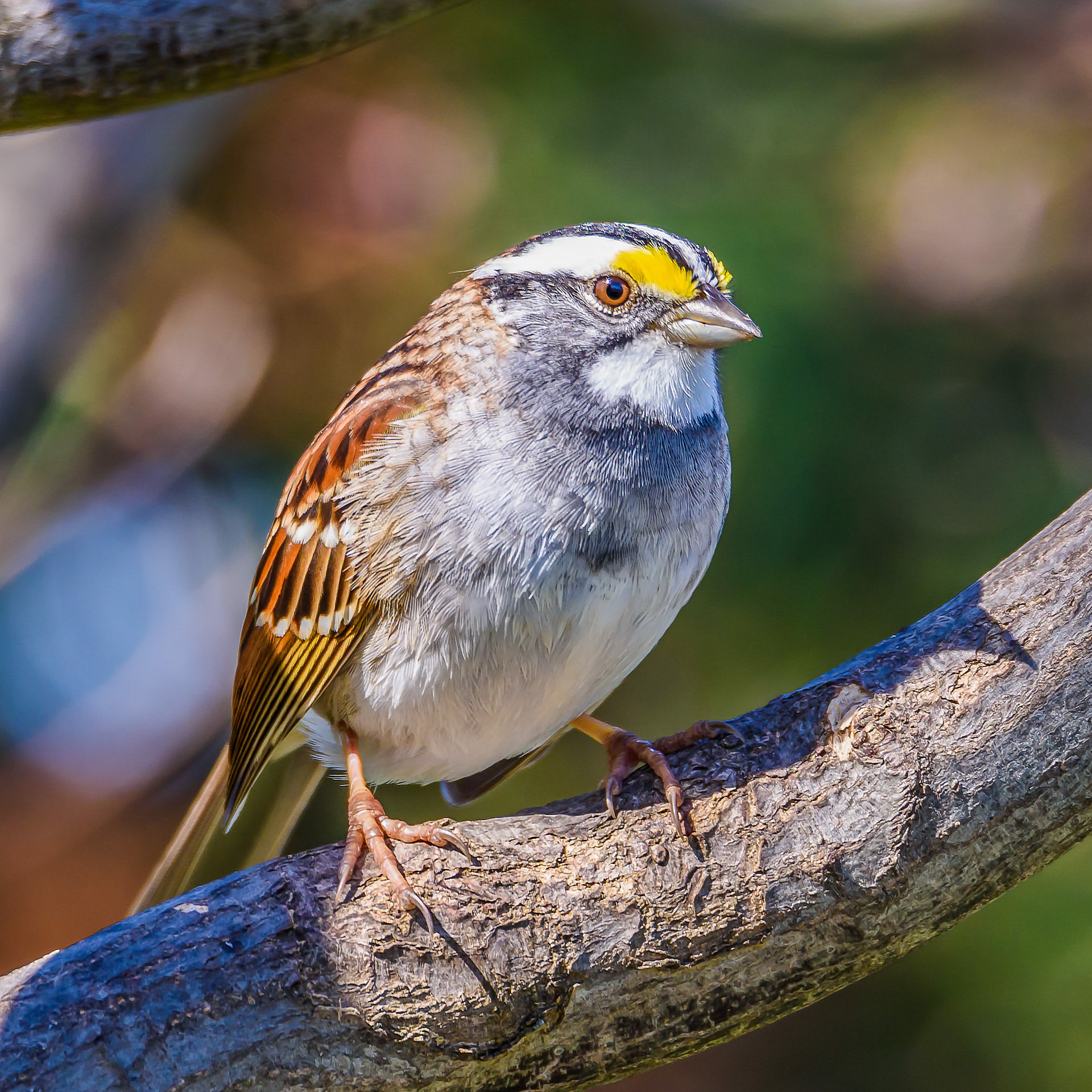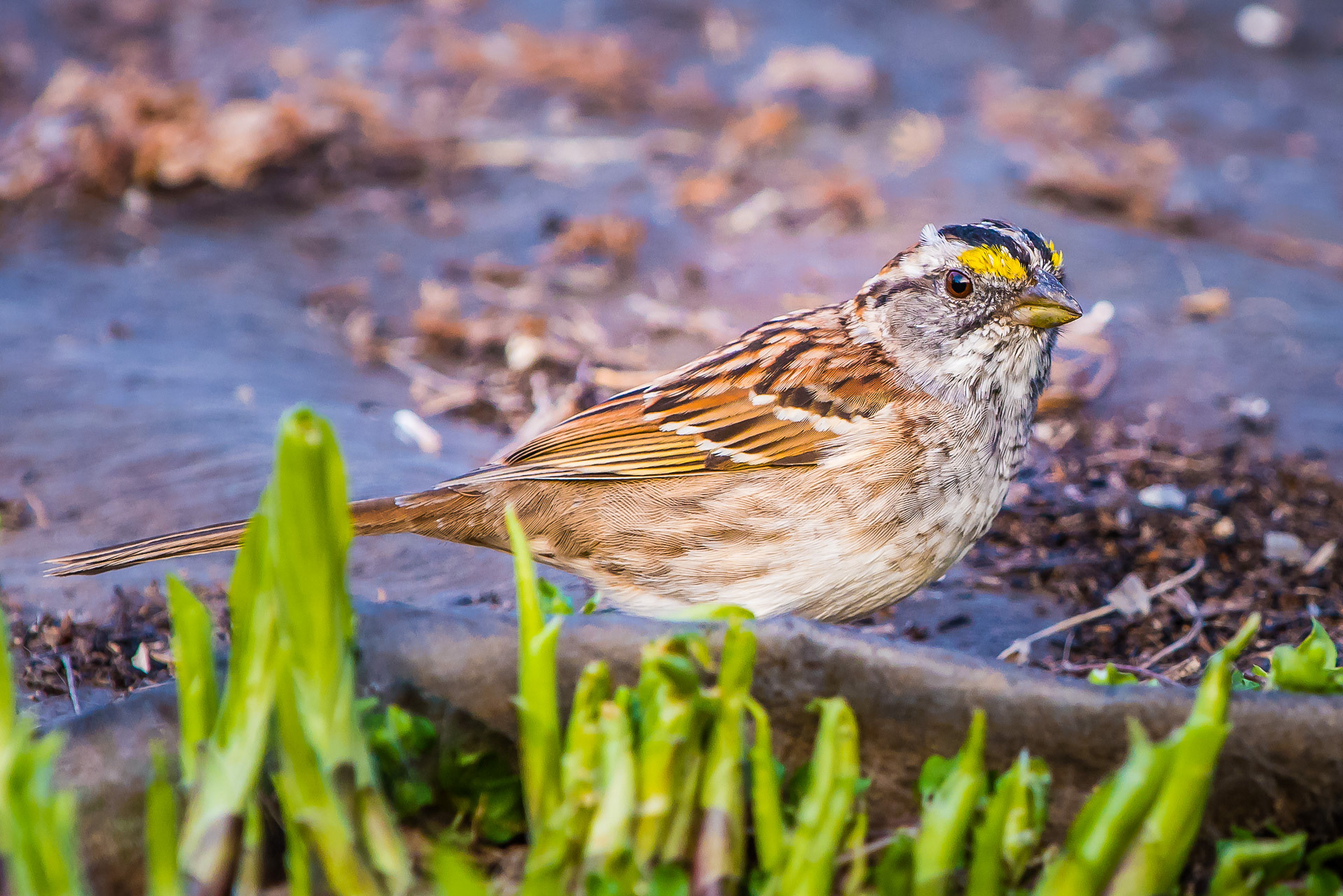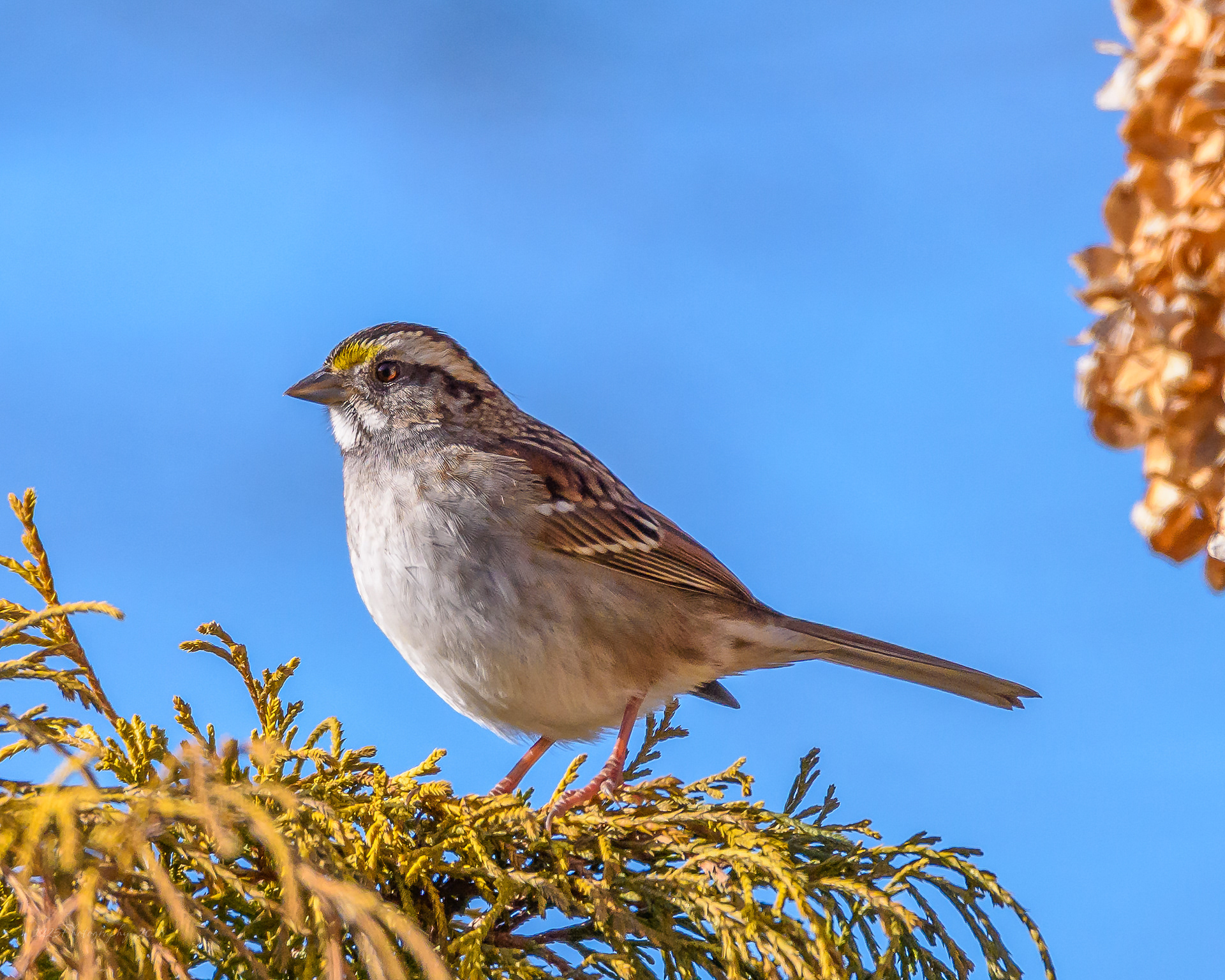



Crisp facial markings make the White-throated Sparrow an attractive bird as well as a hopping, flying anatomy lesson. There’s the black eyestripe, the white crown and supercilium, the yellow lores, the white throat bordered by a black whisker, or malar stripe. They’re also a great entrée into the world of birdsong, with their pretty, wavering whistle of Oh-sweet-canada. These forest sparrows breed mostly across Canada, but they’re familiar winter birds across most of eastern and southern North America and California. The above description is provided from: www.allaboutbirds.org



